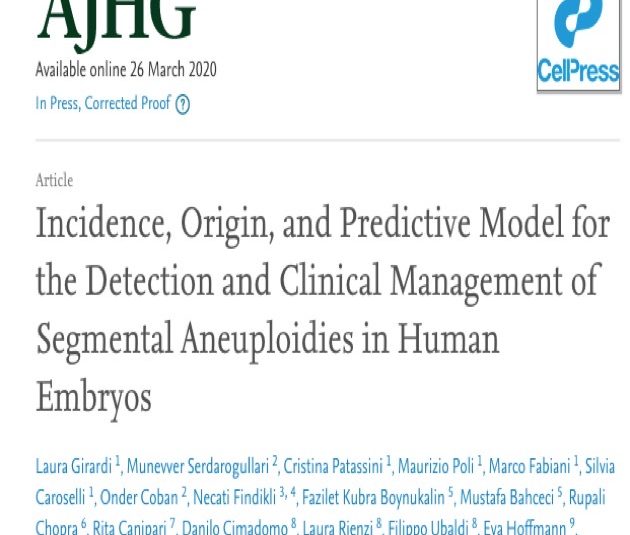
Laura Girardi, Munevver Serdarogullari, Cristina Patassini, Maurizio Poli, Marco Fabiani, Silvia Caroselli, Onder Coban, Necati Findikli, Fazilet Kubra Boynukalin, Mustafa Bahceci, Rupali Chopra, Rita Canipari, Danilo Cimadomo, Laura Rienzi, Filippo Ubaldi, Eva Hoffmann, Carmen Rubio, Carlos Simon, and Antonio Capalbo
The American Journal of Human Genetics online 26 March – 106, 1–10, April 2, 2020
Abstract
Despite next-generation sequencing, which now allows for the accurate detection of segmental aneuploidies from in vitro fertilization embryo biopsies, the origin and characteristics of these aneuploidies are still relatively unknown. Using a multifocal biopsy approach (four trophectoderms [TEs] and one inner cell mass [ICM] analyzed per blastocyst; n 1⁄4 390), we determine the origin of the aneuploidy and the diagnostic predictive value of segmental aneuploidy detection in TE biopsies toward the ICM’s chromosomal constitution. Con- trary to the prevalent meiotic origin of whole-chromosome aneuploidies, we show that sub-chromosomal abnormalities in human blas- tocysts arise from mitotic errors in around 70% of cases. As a consequence, the positive-predictive value toward ICM configuration was significantly lower for segmental as compared to whole-chromosome aneuploidies (70.8% versus 97.18%, respectively). In order to enhance the clinical utility of reporting segmental findings in clinical TE biopsies, we have developed and clinically verified a risk strat- ification model based on a second TE biopsy confirmation and segmental length; this model can significantly improve the prediction of aneuploidy risk in the ICM in over 86% of clinical cases enrolled. In conclusion, we provide evidence of the predominant mitotic origin of segmental aneuploidies in preimplantation embryos and develop a risk stratification model that can help post-test genetic counseling and that facilitates the decision-making process on clinical utilization of these embryos.
Keywords
